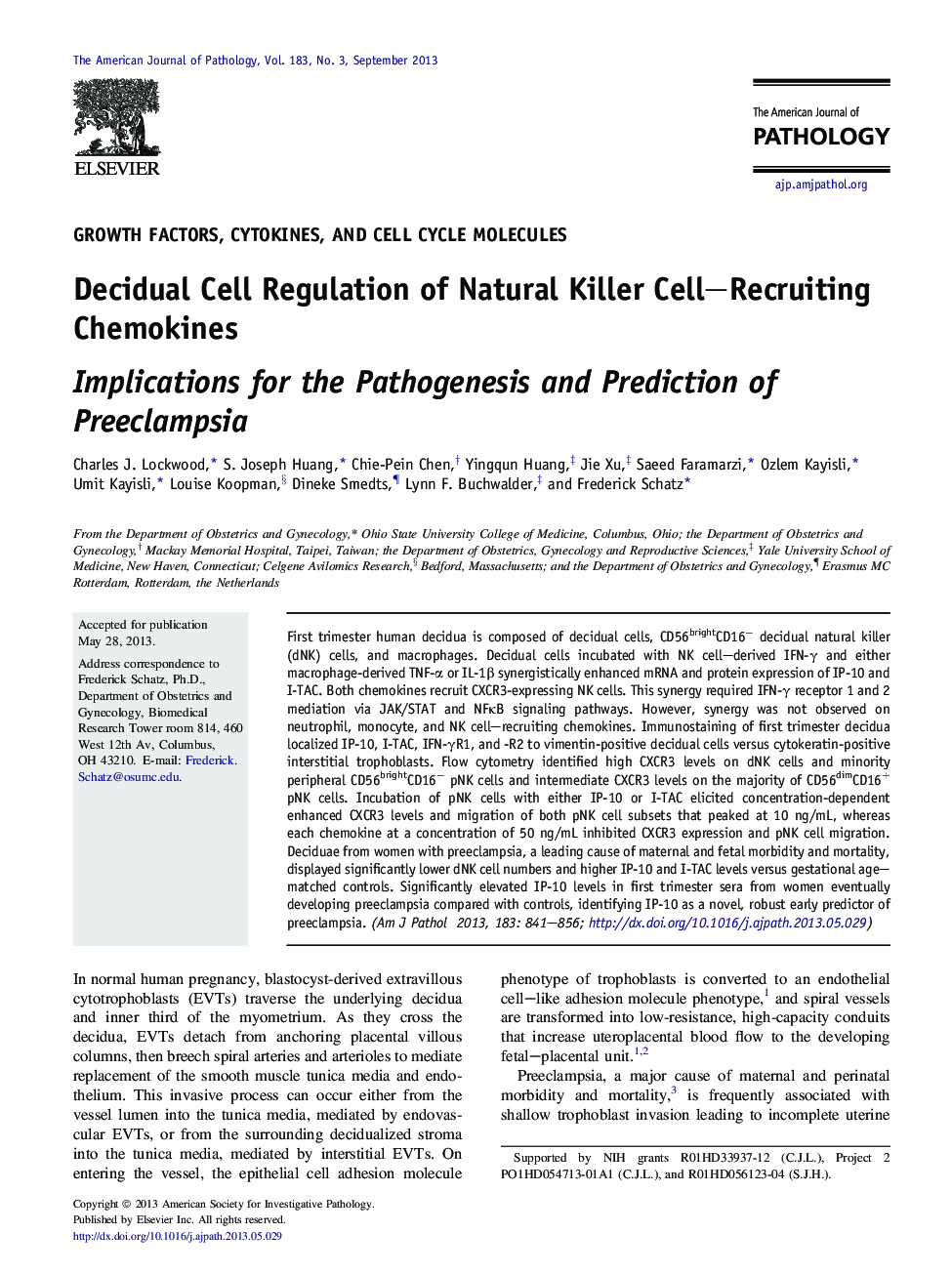| Article ID | Journal | Published Year | Pages | File Type |
|---|---|---|---|---|
| 5935833 | The American Journal of Pathology | 2013 | 16 Pages |
Abstract
First trimester human decidua is composed of decidual cells, CD56brightCD16â decidual natural killer (dNK) cells, and macrophages. Decidual cells incubated with NK cell-derived IFN-γ and either macrophage-derived TNF-α or IL-1β synergistically enhanced mRNA and protein expression of IP-10 and I-TAC. Both chemokines recruit CXCR3-expressing NK cells. This synergy required IFN-γ receptor 1 and 2 mediation via JAK/STAT and NFκB signaling pathways. However, synergy was not observed on neutrophil, monocyte, and NK cell-recruiting chemokines. Immunostaining of first trimester decidua localized IP-10, I-TAC, IFN-γR1, and -R2 to vimentin-positive decidual cells versus cytokeratin-positive interstitial trophoblasts. Flow cytometry identified high CXCR3 levels on dNK cells and minority peripheral CD56brightCD16â pNK cells and intermediate CXCR3 levels on the majority of CD56dimCD16+ pNK cells. Incubation of pNK cells with either IP-10 or I-TAC elicited concentration-dependent enhanced CXCR3 levels and migration of both pNK cell subsets that peaked at 10 ng/mL, whereas each chemokine at a concentration of 50 ng/mL inhibited CXCR3 expression and pNK cell migration. Deciduae from women with preeclampsia, a leading cause of maternal and fetal morbidity and mortality, displayed significantly lower dNK cell numbers and higher IP-10 and I-TAC levels versus gestational age-matched controls. Significantly elevated IP-10 levels in first trimester sera from women eventually developing preeclampsia compared with controls, identifying IP-10 as a novel, robust early predictor of preeclampsia.
Related Topics
Health Sciences
Medicine and Dentistry
Cardiology and Cardiovascular Medicine
Authors
Charles J. Lockwood, S. Joseph Huang, Chie-Pein Chen, Yingqun Huang, Jie Xu, Saeed Faramarzi, Ozlem Kayisli, Umit Kayisli, Louise Koopman, Dineke Smedts, Lynn F. Buchwalder, Frederick Schatz,
